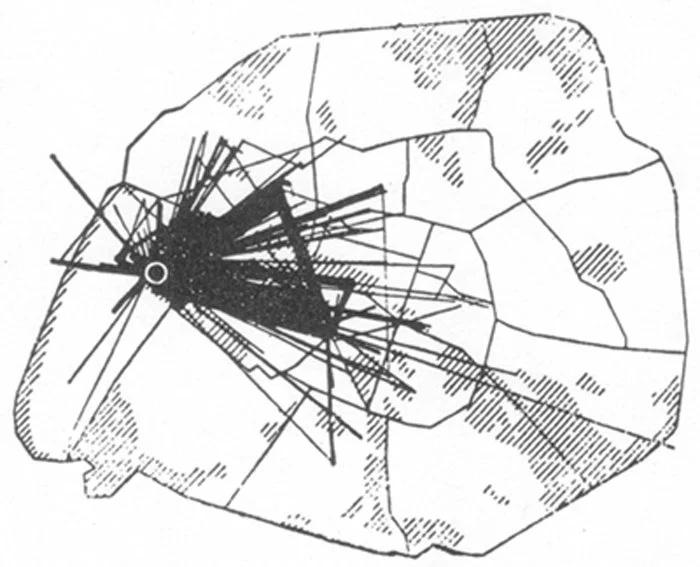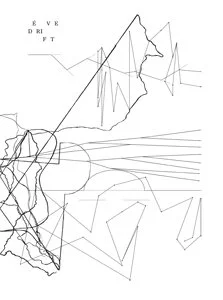“THE DERIVE EXPERIMENT”
Keri Rosebraugh, Paloma Demasi, Mayke Verhoeven, Samina Virani
Turning clockwise and then anticlockwise.
Directionless.
We will follow our feet.
Sensing, breathing, wandering, what you remember.
The exercise is 1 hour long.
The derive is a listening technique; a way of wandering, following our feet, tapping into unconscious codes, mystical messages and ways to “remember.”
As depicted in Nacer Khemir’s short movie, “The Search for Muhi al-Din ibn Arabi,” the seeker first unveils the world of the senses. The waqt – that is, the anchoring of his own being in his present state. The next degree is the unveiling of the imaginary world (khayâl), so that the world of meanings (ma’nâ) becomes visible. Later the seeker sees how life spreads through the bodies. After this the seeker comes to see the forms of all mankind. From this point on the seeker knows all things according to “Reality” and not as the ordinary person sees them. Then he/she is unveiled; invisible to himself/herself, with self nowhere to be found, there is no trace of being inside (fanâ’). The next stage is the returning to oneself and the remaining (baqâ’) in that which he/she is. The seeker is brought back to the world of the senses.
From November 2024 - June 2025, Samina lead a weekly experiment called “the derive”, as part of “the art of remembering” residency program she created for a group of international artists. In these sessions, the group gathered every Wednesday under the Pont Marie Bridge in Paris at 11am. Spinning around directionless with their eye’s closed, they then stopped and began to wander, in stillness or in movement for 1 hour. A silent and solo act, designed to explore inner callings by following their feet, their senses, unraveling parts of their subconscious and imaginary worlds. Serendipity, magic, and connectivity between the group consistently emerged in each session.
In April 2025, the four artists invited several individuals from Paris to join in their experiment, then concluding in a salon in “the looking glass.” As each unraveled their stories, common threads of gestures, subtleties and stillness were experienced by each and, as a group, when tuning into the collective.
Reference:
The dérive (French: [de.ʁiv], "drift") is an unplanned journey through a landscape, usually urban, in which participants stop focusing on their everyday relations to their social environment. Developed by members of the Letterist International, it was first publicly theorized in Guy Debord's "Theory of the Dérive" (1956). Debord defines the dérive as "a mode of experimental behaviour linked to the conditions of urban society: a technique of rapid passage through varied ambiances.
Though solo dérives are possible, Debord indicates that the most fruitful numerical arrangement consists of several small groups of two or three people who have reached the same level of awareness, since cross-checking these different groups' impressions makes it possible to arrive at more objective conclusions.
The dérive's goals include studying the terrain of the city (psychogeography) and emotional disorientation, both of which lead to the potential creation of Situations.
The concept of the dérive has its origins in the Letterist International, an avant-garde and Marxist collective based in Paris. The dérive was a critical tool for understanding and developing the theory of psychogeography, defined as the "specific effects of the geographical environment (whether consciously organized or not) on the emotions and behavior of individuals."
For the Situationists, the dérive was a revolutionary technique to combat the malaise and boredom of the society of the spectacle.






